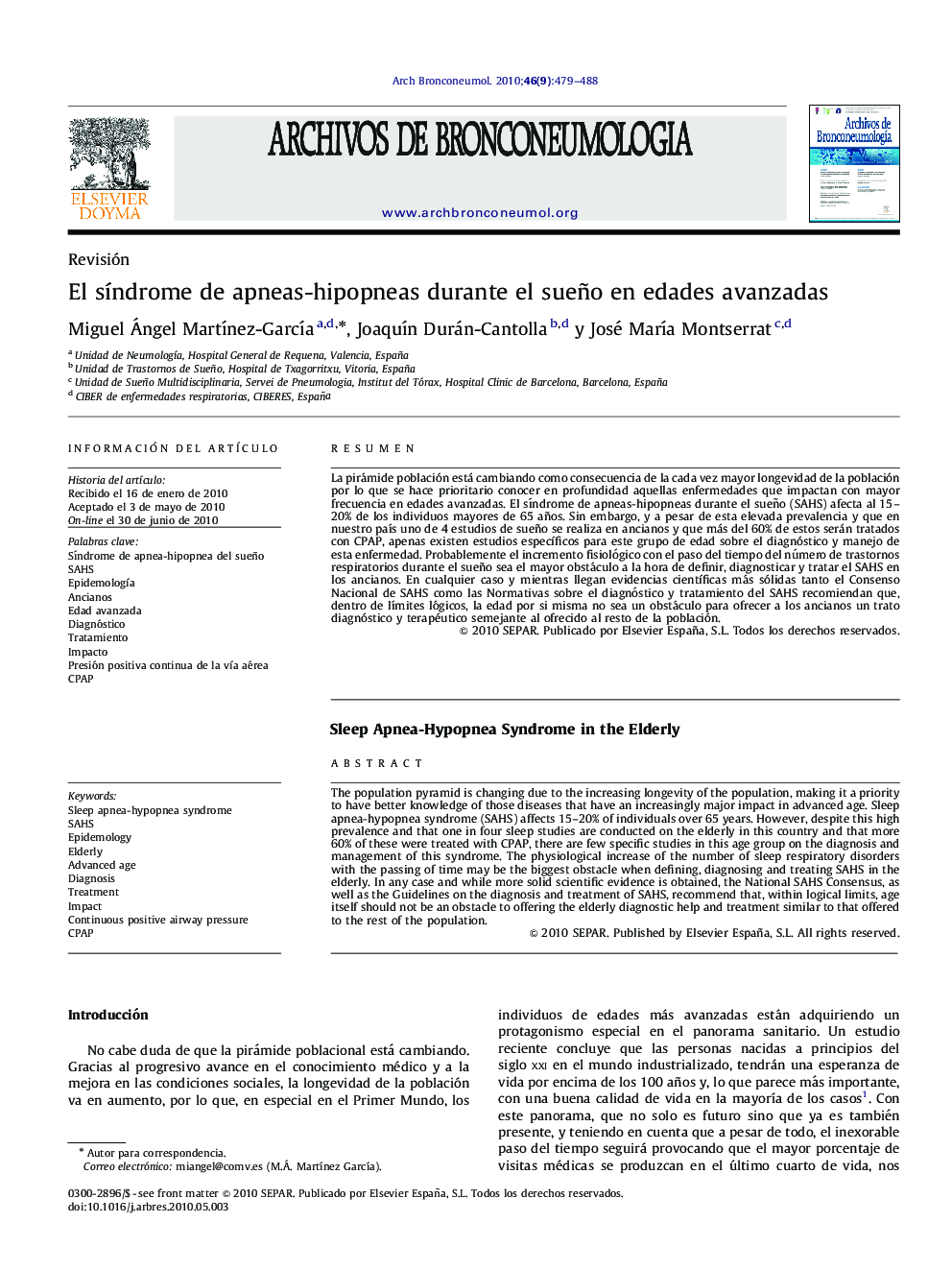| Article ID | Journal | Published Year | Pages | File Type |
|---|---|---|---|---|
| 4203770 | Archivos de Bronconeumología | 2010 | 10 Pages |
ResumenLa pirámide población está cambiando como consecuencia de la cada vez mayor longevidad de la población por lo que se hace prioritario conocer en profundidad aquellas enfermedades que impactan con mayor frecuencia en edades avanzadas. El síndrome de apneas-hipopneas durante el sueño (SAHS) afecta al 15–20% de los individuos mayores de 65 años. Sin embargo, y a pesar de esta elevada prevalencia y que en nuestro país uno de 4 estudios de sueño se realiza en ancianos y que más del 60% de estos serán tratados con CPAP, apenas existen estudios específicos para este grupo de edad sobre el diagnóstico y manejo de esta enfermedad. Probablemente el incremento fisiológico con el paso del tiempo del número de trastornos respiratorios durante el sueño sea el mayor obstáculo a la hora de definir, diagnosticar y tratar el SAHS en los ancianos. En cualquier caso y mientras llegan evidencias científicas más sólidas tanto el Consenso Nacional de SAHS como las Normativas sobre el diagnóstico y tratamiento del SAHS recomiendan que, dentro de límites lógicos, la edad por si misma no sea un obstáculo para ofrecer a los ancianos un trato diagnóstico y terapéutico semejante al ofrecido al resto de la población.
The population pyramid is changing due to the increasing longevity of the population, making it a priority to have better knowledge of those diseases that have an increasingly major impact in advanced age. Sleep apnea-hypopnea syndrome (SAHS) affects 15–20% of individuals over 65 years. However, despite this high prevalence and that one in four sleep studies are conducted on the elderly in this country and that more 60% of these were treated with CPAP, there are few specific studies in this age group on the diagnosis and management of this syndrome. The physiological increase of the number of sleep respiratory disorders with the passing of time may be the biggest obstacle when defining, diagnosing and treating SAHS in the elderly. In any case and while more solid scientific evidence is obtained, the National SAHS Consensus, as well as the Guidelines on the diagnosis and treatment of SAHS, recommend that, within logical limits, age itself should not be an obstacle to offering the elderly diagnostic help and treatment similar to that offered to the rest of the population.
